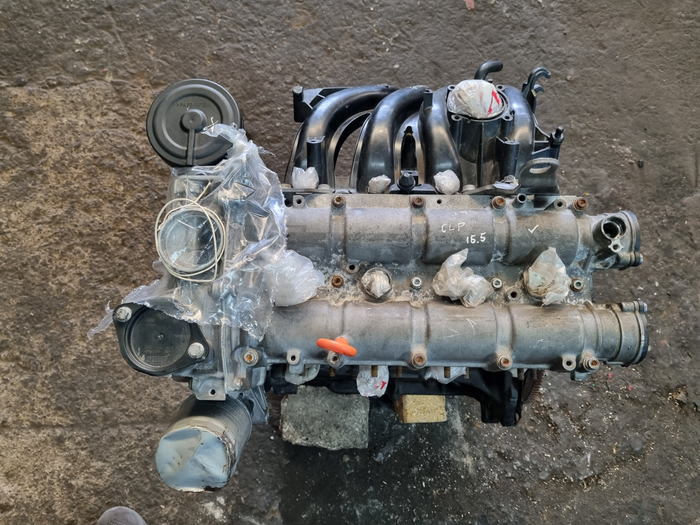Upgrade your machinery with a high-quality clp engine.
Upgrade your machinery with a high-quality clp engine.
Blog Article
Exactly How a Clp Engine Can Boost Efficiency in Different Industries
The advent of CLP engines marks a substantial change in operational efficiency across different sectors, driven by their capability to enhance gas intake and reduce downtime. As companies increasingly prioritize sustainability alongside effectiveness, the duty of CLP engines comes to be also more important.
Overview of CLP Engines
CLP engines, or Continual Liquid Propellant engines, represent a significant development in propulsion innovation, especially for space applications. These engines make use of a constant feed system that allows for the continual expulsion of propellant, resulting in boosted effectiveness and efficiency compared to traditional strong or hybrid propulsion systems. By keeping a continuous flow of fluid propellant, CLP engines can attain extra specific drive control, which is vital for maneuvering spacecraft in various goal circumstances.
The style of CLP engines integrates innovative materials and innovative gas administration systems. clp engine. This results in minimized weight and boosted reliability, important elements for long-duration room missions. Additionally, the continual operation minimizes the threat of burning instability, an usual challenge in standard rocket engines.

Advantages in Production
The manufacturing of Continuous Fluid Propellant (CLP) engines offers numerous significant benefits that improve both efficiency and cost-effectiveness. One of the main benefits is the structured production procedure, which reduces the complexity related to traditional propulsion systems. By utilizing fluid propellant, makers can achieve greater accuracy in engine performance, leading to enhanced energy result and lowered waste.
In addition, CLP engines facilitate a higher degree of modularity, permitting for less complicated combination into different production lines. This flexibility can substantially lower lead times and boost overall operational flexibility. Using CLP innovation additionally has a tendency to reduce the requirement for considerable maintenance as a result of fewer moving parts, which converts right into minimized downtime and functional expenses.

Applications in Logistics
Leveraging Continuous more information Fluid Propellant (CLP) engines in logistics uses considerable advantages in functional performance and integrity. These engines supply a durable service for different transport requirements, enabling the seamless motion of items across huge ranges. The fundamental style of CLP engines permits for consistent power output, which equates into smoother and much more foreseeable transportation routines.
Among the crucial applications of CLP engines in logistics is in durable freight transport, where they can drive both ground and airborne lorries. Their capacity to preserve high efficiency under varying tons problems guarantees that delivery timelines are fulfilled, therefore boosting customer complete satisfaction. In addition, CLP engines can be integrated into automated logistics systems, facilitating real-time monitoring and maximizing course planning.
In addition, the toughness of CLP engines minimizes maintenance downtime, allowing logistics companies to maximize their functional abilities. This is specifically useful in warehousing procedures, where performance in handling and transporting goods is crucial. As logistics remains to develop, the integration of CLP engines stands for a forward-thinking method that not only enhances efficiency yet also sustains the market's expanding demands for integrity and rate.
Effect On Power Efficiency
How do Continual Liquid Propellant (CLP) engines enhance power efficiency in transport? CLP engines make try this site use of a consistent flow of fluid gas, enhancing burning procedures and keeping a steady drive result. This layout decreases power losses connected with traditional burning engines, where gas distribution can vary and cause inadequacies.
The continuous procedure of CLP engines permits a much more reliable thermal cycle, leading to higher details impulse contrasted to standard engines. clp engine. This translates to minimized gas usage for the same amount of work done, dramatically lowering operational expenses throughout various transport fields, consisting of aeronautics and maritime markets
In addition, the ability of CLP engines to keep optimal performance under varying load conditions decreases the requirement for constant acceleration and slowdown, further improving fuel Visit Your URL performance. Improved power performance not only adds to set you back savings yet also causes decrease greenhouse gas discharges, aligning with international sustainability objectives.
Future Trends and Innovations
Emerging advancements in Continuous Fluid Propellant (CLP) engine innovation pledge to reinvent the landscape of transport efficiency and sustainability. As markets pivot toward greener options, CLP engines stand at the center, incorporating cutting-edge materials and layout approaches that improve efficiency while lessening ecological effect.
One of the most appealing patterns is the adoption of hybrid systems that integrate CLP engines with renewable resource resources. This synergy can enhance gas intake and decrease discharges, straightening with worldwide sustainability goals. Developments in computational fluid dynamics (CFD) are assisting in the design of more aerodynamically effective engines, leading to decreased drag and improved gas efficiency.
In addition, the development of smart tracking systems is readied to improve operational effectiveness. These systems leverage information analytics and IoT technology to optimize engine performance in real-time, ensuring that the engines operate within their most reliable criteria.
As research study continues to check out different propellant formulations-- such as biofuels and synthetic gas-- the future of CLP engines looks encouraging. By using these innovations, markets can not just enhance their effectiveness however additionally contribute dramatically to a cleaner, much more sustainable future in transport.
Final Thought
In verdict, CLP engines represent a substantial development in performance throughout numerous industries. The integration of advanced products and less relocating components decreases upkeep demands, while placement with sustainability objectives positions CLP engines as a crucial technology for the future.
Report this page